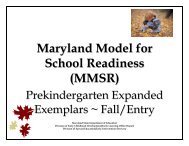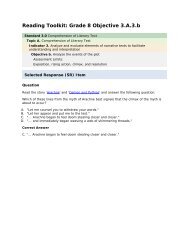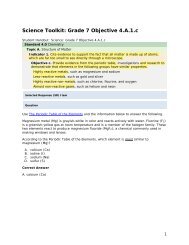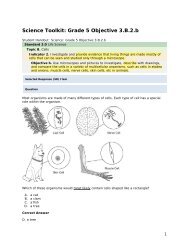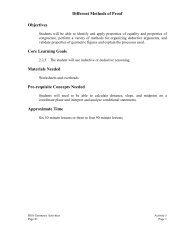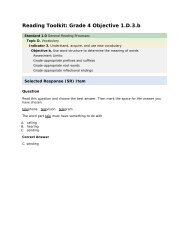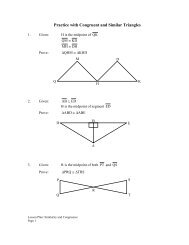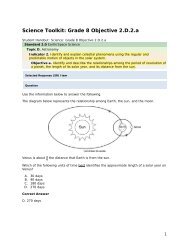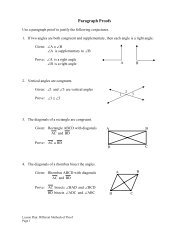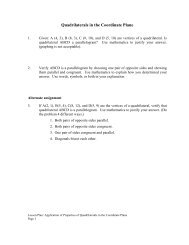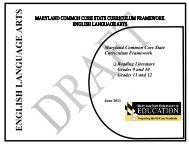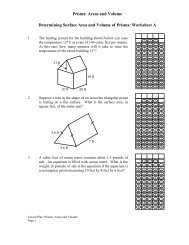HSA Biology Public Release 2005 - mdk12
HSA Biology Public Release 2005 - mdk12
HSA Biology Public Release 2005 - mdk12
You also want an ePaper? Increase the reach of your titles
YUMPU automatically turns print PDFs into web optimized ePapers that Google loves.
Session<br />
1<br />
D irections<br />
Use the information and the food chain below to answer Numbers 23 and 24.<br />
Cholera bacteria live inside copepods, tiny marine organisms. This type of<br />
microscopic bacteria harms the copepods by feeding off their internal tissues.<br />
Both of these organisms are found in oceans throughout the world. Unfavorable<br />
temperatures or salt levels may cause cholera bacteria to become inactive. When<br />
inactive, they do not feed or reproduce. When conditions become favorable, they<br />
become active once again.<br />
A cholera population may depend on the population of copepods in the<br />
surrounding water. A simple food chain showing this relationship is shown below.<br />
MARINE FOOD CHAIN<br />
Cholera bacteria<br />
Copepods<br />
Microscopic algae<br />
■23<br />
Cholera bacteria perform binary<br />
fission to<br />
A<br />
B<br />
C<br />
D<br />
reproduce asexually<br />
digest food rapidly<br />
regulate temperature<br />
increase body size<br />
■24<br />
Which of these describes the<br />
relationship between cholera<br />
bacteria and copepods?<br />
F<br />
G<br />
H<br />
J<br />
mutualism<br />
parasite–host<br />
commensalism<br />
producer–consumer<br />
<strong>Biology</strong> <strong>Public</strong> <strong>Release</strong> <strong>2005</strong> Page 17<br />
Copyright © <strong>2005</strong> by Maryland State Department of Education.



